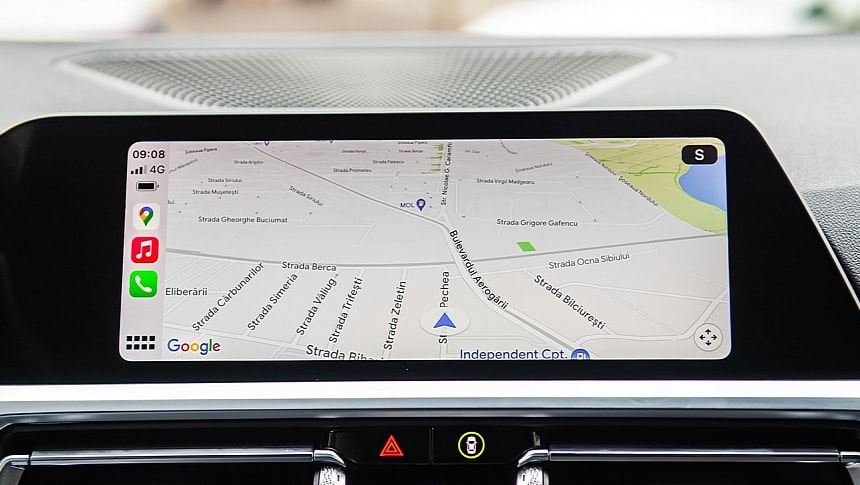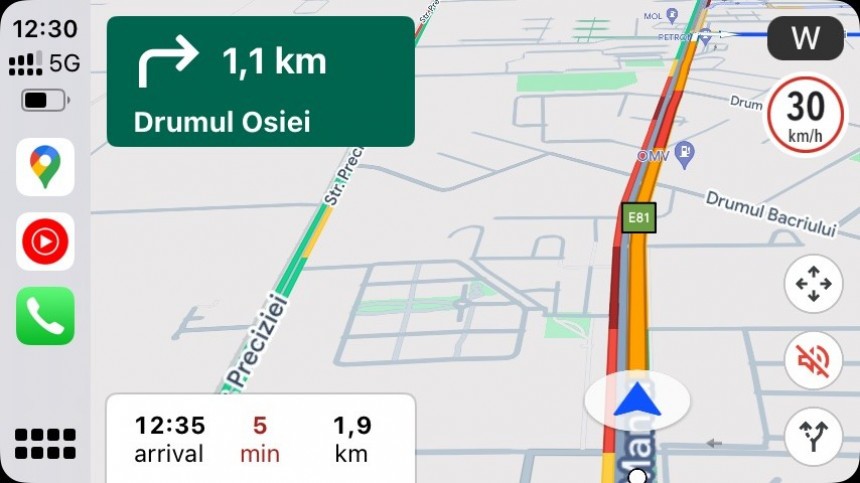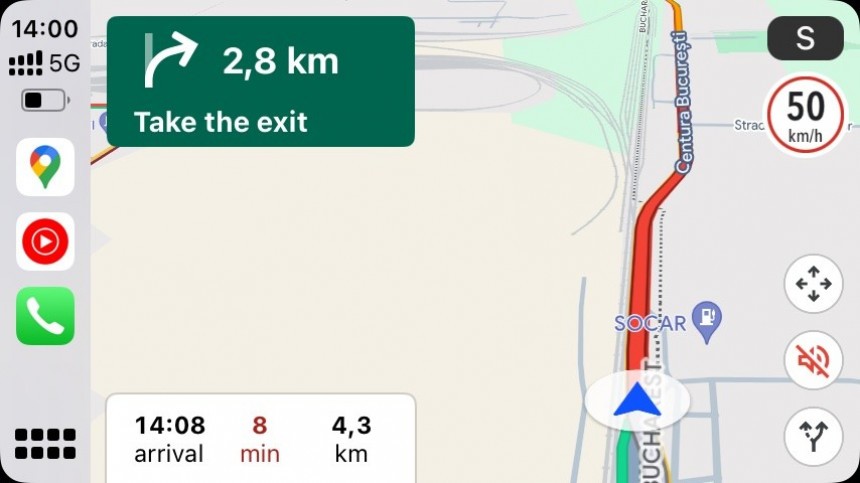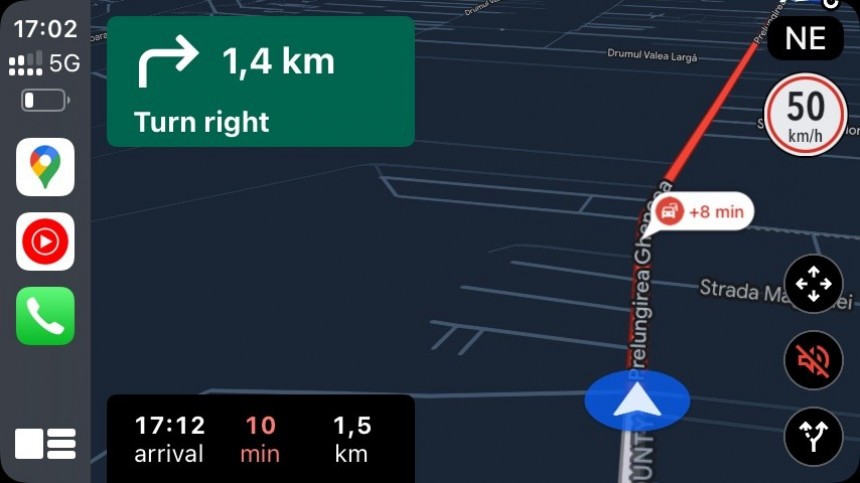It's 2024, and going from where you are to where you want to be in the shortest possible time is no longer possible. Many users are looking for eco-friendly alternatives, which involve not only zero-emission vehicles but also software that helps reduce emissions and cut fuel consumption.
Google Maps tackles this problem in the most straightforward and convenient way. In 2021, Google updated Google Maps with support for eco-friendly routes, trying to help drivers reduce the carbon footprint generated by their vehicles.
The logic behind this feature makes sense. With eco-friendly routes, Google Maps looks for roads where you wouldn't sit in bumper-to-bumper traffic but suggest routes where your vehicle could record an overall lower fuel consumption for the entire journey. For example, instead of sitting in heavy traffic, you could be sent on a route where you can drive at a speed that allows for improved economy based on your vehicle's engine.
Eventually, the eco-friendly route could be longer, adding several miles and minutes to the journey, but the primary benefit is the reduced carbon footprint.
The eco-friendly alternative is displayed in the route selection screen in Google Maps after searching for a destination. Users can still choose between the fastest and eco-friendly routes, but Google Maps can also be configured to "prefer fuel-efficient routes." When this setting is enabled, Google Maps will suggest fuel-efficient routes by default when arrival times are similar.
This means that you'll be sent on a route considered to be eco-friendly if the ETA to the destination is similar or doesn't add more than a few minutes to the journey. If the difference is significant and you could end up spending more time driving, the fastest route will still be selected by default.
The eco-friendly routing has been around for three years in some regions—it's already available worldwide—and I'm seeing more people use it instead of the fastest route when starting navigation.
An Uber Green driver recently explained the difference to me. If you use Google Maps' fastest route, you are more likely to encounter heavy traffic along the route. If eco-friendly routes are enabled using the setting mentioned above, Google Maps will send you on routes where you wouldn't encounter bumper-to-bumper traffic (if the route allows it) without significant differences in the ETA.
Here's how it works. If you want to go from point A to point B, Google Maps' fastest route could get you to the destination in 23 minutes. If you enable the eco-friendly alternative, the total drive time could be 25 minutes. However – and this is a big "however" – you could arrive at the destination faster because you are less likely to encounter heavy traffic. Again, this is only valid in a region where Google Maps can find routes with lighter traffic, so if you drive during rush hour, this trick might no longer make a difference.
The Uber Green driver told me that he always asks his passenger if he can follow the eco-friendly route when driving to a destination – mainly because using another route could increase the cost of the trip. However, the eco-friendly route could end up being faster than the fastest route, and someone who spends all day driving an Uber knows precisely when this is more likely to happen.
Google says the eco-friendly routing engine is already doing wonders. It managed to reduce emissions by the equivalent of taking over 500,000 vehicles off the road, as it provided drivers with alternatives that helped them burn less fuel. You can imagine how important this feature can become in the long term, especially as Google has also brought it to Google Maps on Android Automotive, where it could help resolve range anxiety.
The eco-friendly routing could eventually become a tool not only to reduce emissions but also to arrive at the destination faster. If the difference versus the fastest route is insignificant, it could be worth taking the risk of using it.
My Uber Green driver said most of his colleagues use the same trick in the car. Considering Google doesn't provide any specifics on how many people prefer eco-friendly routing in Google Maps—albeit the figures mentioned above suggest that its adoption is growing—I'm curious to find out how many people still use Google Maps with the fastest route.
Sure enough, if you're specifically interested in getting to your destination as fast as possible, Waze could be the better choice, especially because it's always aware of what happens on the road, thanks to traffic reports submitted by users. However, Google Maps is often considered the world's top navigation software, and this eco-friendly routing option could make a huge difference.
Let me know how you use Google Maps in the comment section below, and tell me if the eco-friendly routes indeed helped you save fuel, reduce emissions, and arrive at your destination faster than the fastest route typically served by the application.
The logic behind this feature makes sense. With eco-friendly routes, Google Maps looks for roads where you wouldn't sit in bumper-to-bumper traffic but suggest routes where your vehicle could record an overall lower fuel consumption for the entire journey. For example, instead of sitting in heavy traffic, you could be sent on a route where you can drive at a speed that allows for improved economy based on your vehicle's engine.
Eventually, the eco-friendly route could be longer, adding several miles and minutes to the journey, but the primary benefit is the reduced carbon footprint.
The eco-friendly alternative is displayed in the route selection screen in Google Maps after searching for a destination. Users can still choose between the fastest and eco-friendly routes, but Google Maps can also be configured to "prefer fuel-efficient routes." When this setting is enabled, Google Maps will suggest fuel-efficient routes by default when arrival times are similar.
The eco-friendly routing has been around for three years in some regions—it's already available worldwide—and I'm seeing more people use it instead of the fastest route when starting navigation.
An Uber Green driver recently explained the difference to me. If you use Google Maps' fastest route, you are more likely to encounter heavy traffic along the route. If eco-friendly routes are enabled using the setting mentioned above, Google Maps will send you on routes where you wouldn't encounter bumper-to-bumper traffic (if the route allows it) without significant differences in the ETA.
The Uber Green driver told me that he always asks his passenger if he can follow the eco-friendly route when driving to a destination – mainly because using another route could increase the cost of the trip. However, the eco-friendly route could end up being faster than the fastest route, and someone who spends all day driving an Uber knows precisely when this is more likely to happen.
Google says the eco-friendly routing engine is already doing wonders. It managed to reduce emissions by the equivalent of taking over 500,000 vehicles off the road, as it provided drivers with alternatives that helped them burn less fuel. You can imagine how important this feature can become in the long term, especially as Google has also brought it to Google Maps on Android Automotive, where it could help resolve range anxiety.
My Uber Green driver said most of his colleagues use the same trick in the car. Considering Google doesn't provide any specifics on how many people prefer eco-friendly routing in Google Maps—albeit the figures mentioned above suggest that its adoption is growing—I'm curious to find out how many people still use Google Maps with the fastest route.
Sure enough, if you're specifically interested in getting to your destination as fast as possible, Waze could be the better choice, especially because it's always aware of what happens on the road, thanks to traffic reports submitted by users. However, Google Maps is often considered the world's top navigation software, and this eco-friendly routing option could make a huge difference.
Let me know how you use Google Maps in the comment section below, and tell me if the eco-friendly routes indeed helped you save fuel, reduce emissions, and arrive at your destination faster than the fastest route typically served by the application.


















